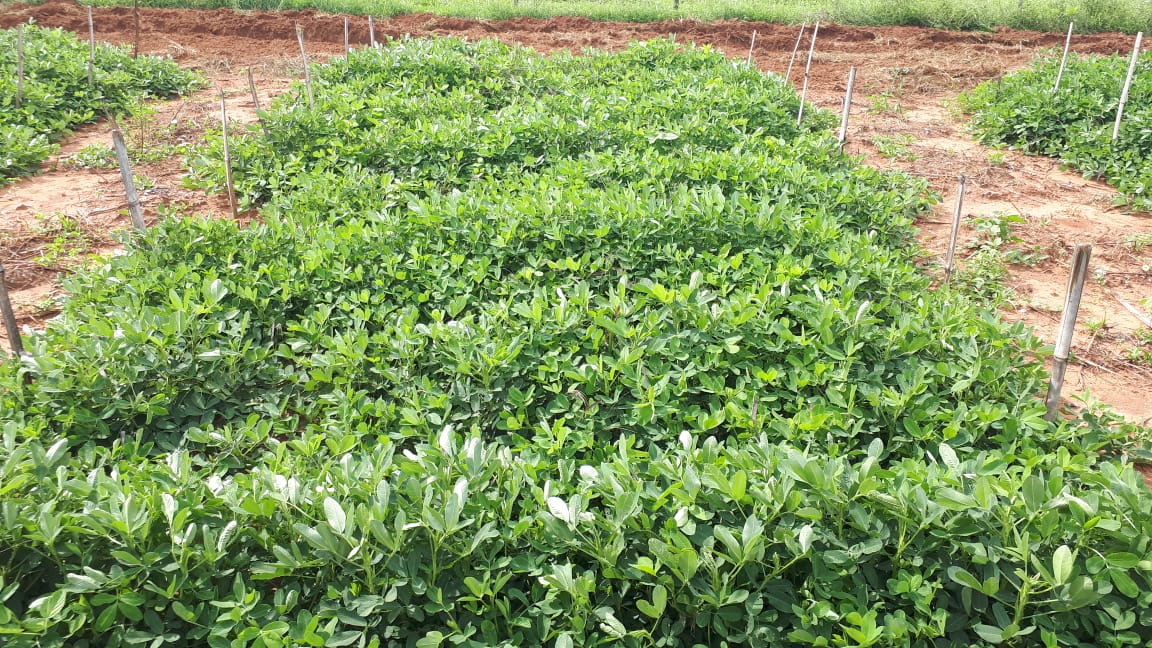Agronomic performance of new peanut lines in the Bolsão Sul-Matogrossense region
DOI:
https://doi.org/10.52755/sas.v2iedesp1.116Keywords:
Arachis hypogaea L., Breeding Program, ProductivityAbstract
The region of Bolsão Sul-Matogrossense has vast areas occupied with forages, in some stage of degradation. Peanut cultivation can be an alternative for the recovery of these areas and a possibility of income for ranchers in the region. This study aimed to evaluate the agronomic performance of peanut genotypes in the edaphoclimatic conditions of the Bolsão Sul-Matogrossense region. The experiment was conducted at the Experimental Farm of the State University of Mato Grosso do Sul – UEMS, located in the municipality of Cassilândia – MS, in the agricultural year 2020/21. The experimental design randomized blocks, with four replications. Ten peanut genotypes were evaluated, seven lines (2133 OL, 1253 OL, 2055 OL, 2010 OL, 1944 OL, 1973 OL and 2101 OL), two cultivars (BRS 421 OL and BRS 423 OL), both developed by the Peanut improvement from Embrapa and an Argentine cultivar from El Carmen (Granoleico). The plots consisted of two lines three meters long, with a spacing of 0.90 m and a useful area for evaluation of 5.4 m2 per plot. The plots were inverted and harvested 131 days after sowing, on March 30, 2021. The variables evaluated were late leaf spot severity, 100-grain weight and pod yield. The genotypes BRS 421 OL, BRS 423 OL and 2133 OL exhibited the lowest severity scores. BRS 421 OL had the highest mass of 100 grains. Finally, the highest yields were observed in the genotypes 1944 OL, 2010 OL, BRS 423 OL, 2133 OL, 1973 OL and 2055 OL, with yields exceeding 5,200 kg.ha-1, demonstrating a possible agronomic adaptation to the edaphoclimatic conditions of the region of Bolsão Sul-Matogrossense.
Downloads

Downloads
Published
How to Cite
Issue
Section
License
Copyright (c) 2021 Tiago Zoz, Cassio de Castro Seron, Eduardo Pradi Vendruscolo, Jair Heuert, Mennes Vieira da Silva, Murilo Battistuzzi Martins, Taís de Moraes Falleiro Suassuna

This work is licensed under a Creative Commons Attribution-NonCommercial-ShareAlike 4.0 International License.
Autores concordam com os seguintes termos:
a) Os autores mantêm os direitos autorais e concedem à revista o direito de primeira publicação, com o trabalho simultaneamente licenciado sob a LicençaAttribution-NonCommercial-ShareAlike 4.0 International, que permite o compartilhamento do trabalho com reconhecimento da autoria e publicação inicial na Revista SAS. A licença permite o uso, a distribuição e a reprodução irrestrita, em qualquer meio, desde que devidamente citada a fonte. Essa licença permite também que outros remixem, adaptem e criem a partir do seu trabalho para fins não comerciais, desde que atribuam a você o devido crédito e que licenciem as novas criações sob termos idênticos.
b) Não cabe aos autores compensação financeira a qualquer título, por artigos ou resenhas publicados na South American Sciences.
c) Os conceitos expressos nos artigos publicados na South American Sciences são de inteira responsabilidade de seus autores.








